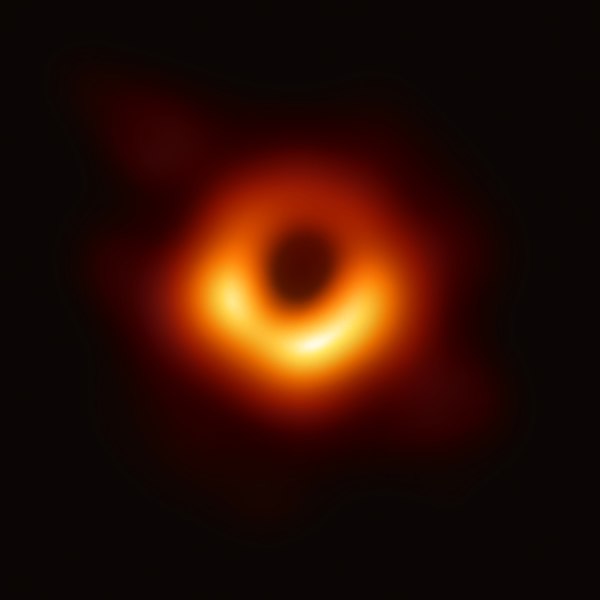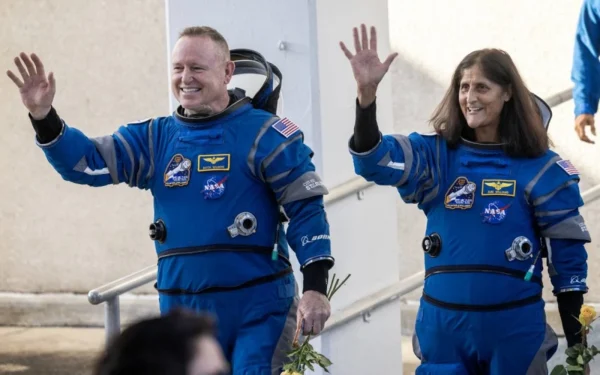A Breakthrough in Black Holes

The first photo of a black hole shows the matter outside the reach of the black hole’s gravitational field, which creates an outline of the object. Courtesy of Event Horizon Telescope.
On May 10, 2019, NASA finally confirmed Einstein’s Theory of Relativity by capturing the first ever photo of a black hole decades before scientists had originally predicted it could be done. Thanks to data from satellites and spacecrafts, scientists around the world have provided the world with photographic proof of Einstein’s theory involving black holes through countless hours of work.
According to EurekAlert!, “Event Horizon Telescope—a planet-scale array of eight ground-based radio telescopes forged through international collaboration—was designed to capture images of a black hole.” A black hole is an extremely dense object from which no light can escape. Theoretically, you cannot see a black hole because its gravity prevents any light from reaching your eyes. However, all of the material just outside of the black hole’s gravitational field is visible, emitting an outline and a shadow of the black hole. It is not known what happens to the energy that enters the black hole, but scientists do know that when something is pulled in, it never reappears.
The picture of the black hole would not have been possible without the linking of multiple ground and airborne satellites. The connection of these telescopes was not physical. Instead, the telescopes were connected by atomic clocks that were used to synchronize and precisely time their image captures. According to the European Southern Observatory, “The EHT (Event Horizon Telescope) [achieved] an angular resolution of 20 micro-arcseconds—enough to read a newspaper in New York from a café in Paris.” This combination of clarity and precision allows for a picture of the supermassive black hole. As The European Southern Observatory (ESO) explains, “Creating the EHT was a formidable challenge which required upgrading and connecting a worldwide network of eight pre-existing telescopes deployed at a variety of challenging high-altitude sites,” including “Volcanoes in Hawaii and Mexico, mountains in Arizona and the Spanish Sierra Nevada, the Chilean Atacama Desert, and Antarctica.” This combination of satellites on earth and in space has created a super satellite, or what ESO considers an “Earth-sized telescope.”
By definition, a black hole cannot be seen since light cannot escape its extreme gravitational pull. However, the impossible was accomplished with significant effort by countries around the world. EHT project director Shepard S. Doeleman of the Center for Astrophysics at Harvard stated, “We have achieved something presumed to be impossible just a generation ago… Breakthroughs in technology, connections between the world’s best radio observatories, and innovative algorithms all came together to open an entirely new window on black holes and the event horizon.” The sheer amount of information that was pulled by the satellites is opening doors for further research on black holes. So much data regarding black holes are collected daily—around thousands of terabytes a day. To put that amount of data in perspective, scientists will be spending years going through it to gain new knowledge about the universe beyond our own solar system.





